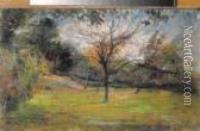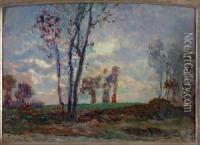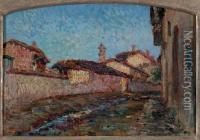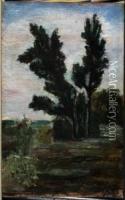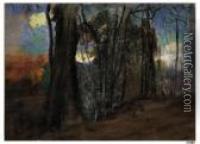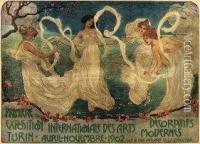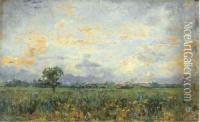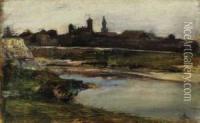Leonardo Bistolfi Paintings
Leonardo Bistolfi was an Italian sculptor, a prominent member of the 'Symbolist' movement in the late 19th and early 20th centuries. Born on March 14, 1859, in Casale Monferrato, Piedmont, he showed an early interest in art. Bistolfi initially studied at the Accademia Albertina in Turin and began his career as a stuccoist and a restorer of medieval frescoes, which influenced his later work.
Bistolfi's sculptural work is characterized by a delicate, poetic style that often explores themes of love, death, and mysticism, aligning with the Symbolist fascination with the metaphysical. He gained recognition for his funerary art, which can be found in many cemeteries across Italy, notably the Monumental Cemetery of Staglieno in Genoa. His works often featured angelic figures, mourning women, and allegorical subjects rendered with a refined sense of form and composition.
In addition to funerary monuments, Bistolfi also created numerous public monuments and memorials, including the notable memorial for the Italian poet Giosuè Carducci. He was involved in various artistic circles and was a founding member of the group 'L'arte decorativa italiana'. Bistolfi's contribution to the Italian art scene extended beyond his own creations as he was also an influential critic and supporter of young artists.
Throughout his career, Bistolfi received various honors and his work was exhibited internationally. He played a significant role in promoting Italian art, particularly at the Paris Exposition Universelle in 1900, where he was awarded a gold medal for his sculptures.
Leonardo Bistolfi's impact on Italian sculpture is marked by his ability to infuse Symbolist themes with a distinctively Italian tradition of form and decoration. He continued to work until his death on September 2, 1933, leaving behind a legacy of art that captures the spiritual and emotional depth of the Symbolist movement.
